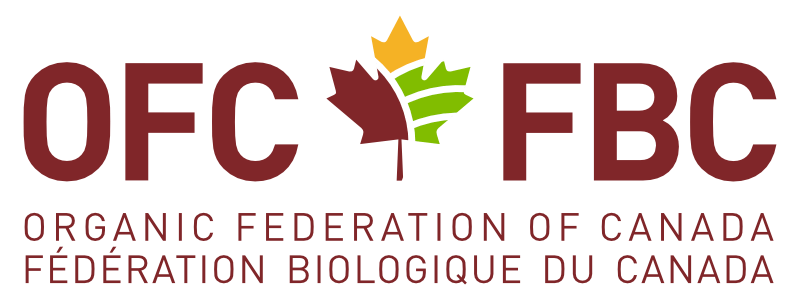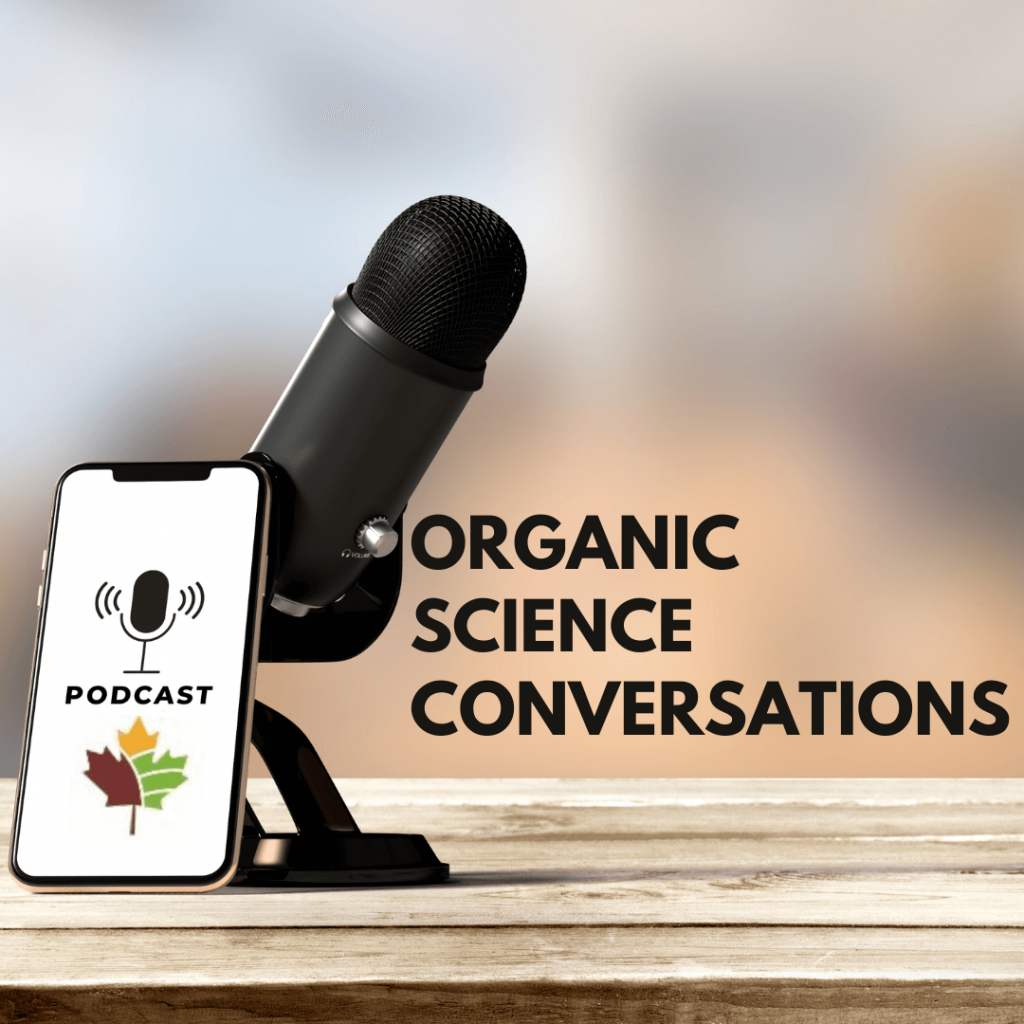Summary
Have you ever heard about the substance called struvite, a potential source of phosphorus for organic farms? Nicole Boudreau has interviewed Dr. Kimberly Schneider from the University of Guelph, who with Dr. Henry Wilson from Agriculture Agri-Food Canada, is co-leading a research activity on the impact of the use of struvite as a soil amendment in organic agriculture.
Download the interview with Kimberley Schneider in PDF format.
Bonjour Kimberly.
Hello Nicole, bonjour!
You are involved in research that is quite unique. When I googled ‘struvite,’ I found out that it was associated with kidney stones and I am not sure what you are focusing on. What is struvite? And as a soil amendment, where does it come from?
Good question because I don’t think a lot of people have heard about struvite. Struvite is a mineral that is precipitated out of wastewater. You’re right; it can be precipitated in the body, in the kidneys under certain conditions. I am not an expert in terms of that.
[Struvite] is an ammonium phosphate mineral that [contains] magnesium as well. When the ratio of those nutrients is correct and the conditions are right, it precipitates out.
In Canada, a company named Ostara has created the pearl process, the process that was approved in 2016 by the [European Commission’s] Expert Group for Technical Advice on Organic Production (EGTOP)(. Struvite is a by-product of human wastewater that is processed in Canada?
Correct. We’re working with Ostara Nutrient Recovery Technologies, the company that precipitates struvite out of sewage human wastewater.
What is the objective of your research activity? I read that you are looking at the agronomic and environmental implications? What are the basic things that you are doing?
The project is trying to address two different issues. One is that we have a lot of phosphorus that, in the form of sewage and wastewater, is going back to our water ways. So, using struvite is a way that we can precipitate out nutrients, especially phosphorus (and also nitrogen), then potentially use it as a fertilizer on crops.
The second issue is that a lot of organic agricultural systems are experiencing phosphorus deficiency. Our testing will indicate the amount of P available to plants [from struvite]. In this project, we want to look at the agronomic effectiveness: is struvite effective as a fertilizer in organically managed systems?
We also want to look at more details of what happens to struvite once it’s in the soil, what form of phosphorus is it detected as, and is it affecting soil health. [In terms of soil health,] we are mainly looking at mycorrhizal fungi because they tend to proliferate when soluble phosphorus levels are low. Struvite is a bit less soluble than conventional fertilizers. As far as we know, the effect of struvite on mycorrhizal populations has never been explored.
The final objective is to look at the environmental impact of applying struvite compared to conventional fertilizer to see is there less phosphorus coming off the field in run-off. We hypothesize that there is less P runaway; we are still waiting on the data to see.
So, it is quite an important study if it reduces the phosphorus run-off to rivers. Where are you having the trials for the experiments? In Ontario? In Manitoba?
I’m based in Ontario, but my collaborators are based in Manitoba. I am working with, as you mentioned, Dr. Henry Wilson, who is based in Brandon. We have a Ph.D. student, Johanne Thiessen Martens, who is based at the University of Manitoba and she is being co-supervised by Dr. Francis Zvomuya. The trials are being conducted not too far from Winnipeg.
And you work on fields and in pots?
A little bit of both. We paired with an existing trial led by Dr. Martin Entz which was looking at the effectiveness of struvite as a fertilizer on wheat, flax and alfalfa. We added an extra year to that so there were three years of data in the field. Then Johanne, the Ph.D. student, conducted the pot trial at the University of Manitoba with alfalfa. Dr. Henry Wilson is leading the water quality component. That involves field work collecting water quality samples in the spring and snow-melt season to see if there are differences after applying struvite versus applying nothing or applying conventional fertilizer.
It is a new practice to use struvite in organic agriculture; what types of result are you targeting? Do you have any idea of the results that you will get?
We have some preliminary results, mostly from the agronomic side. We’ve seen that struvite seems to be quite effective as a phosphorus fertilizer for alfalfa. It has a middle-of-the-road effect on wheat and perhaps the least effectiveness on flax. So there does seem to be a crop factor in seeing how effective struvite is. Alfalfa seems quite promising [based on] three years of field data and also following up as a pot trial.
Struvite seems to be as effective as monoammonium phosphate, which is a conventional soluble P fertilizer, for alfalfa. That may because it is a perennial crop and doesn’t need phosphorus in such a short window as an annual crop.
Struvite is derived from human wastewater. I understand that it can be a great source of phosphorus and other minerals, and it is recyclable. How is using human wastewater as an agricultural amendment perceived? This is not something that is done very widely in the EU or in Canada.
I think anytime something is precipitated out of wastewater, and specifically human sewage, there is precaution and rightfully so. There are concerns about potential contaminants including heavy metals from a waste stream that could contain industrial waste. But because the mineral is precipitated out, it seems to be quite clean.
My group is not in the research of testing for those contaminants, although we will be analyzing the struvite product we’re using for metals. But from what I have read in the literature, struvite seems to be quite clean.
The organic sector is interested because you’re recycling phosphorus and you close the loop of the use of phosphorus. Once your project is completed, how do you plan to communicate the results of your research and how can it impact the work of organic producers?
I think that communication is extremely important after we have our results. Organic producers don’t have that many options for sources of phosphorus. With nitrogen, [in contrast] they can use cover crops and crops that fix nitrogen from the air. [With phosphorus, however], they’re not permitted to apply conventional water-soluble fertilizers. They can use phosphate rock, but it is very insoluble whereas struvite is not water-soluble. It is citrate-soluble. Citric acid and other organic acids are often produced by different plant roots and [can make struvite available to plants].
[Struvite] is seen as a slow release fertilizer. Hopefully, if it gets permitted [for organic agriculture,] it can be a more available source of phosphorus and help to solve some P deficiency issues in our organic systems, especially farms that don’t have livestock or a readily available source of manure.
And you have the potential to recycle waste waters from municipalities?
Yes, hopefully this is seen as a win-win. I think right now struvite is more expensive. I don’t have the numbers as to exactly how much it costs but it’s more expensive than conventional fertilizer. Hopefully we can show benefits in terms of water quality and soil health, and also closing this loop and becoming more efficient in nutrient use as a society. Hopefully there can be policies that promote the use of struvite and make it more economically viable.
Thank you, Kimberly, for sharing this information. The organic sector will be very attentive to the results of your research and we will follow up soon to know what they are. Thank you! Kimberly!
Thank you very much!
This transcript has been lightly edited for length and clarity






